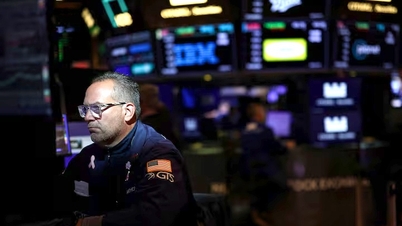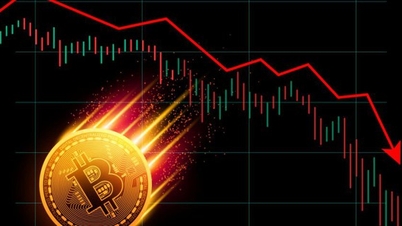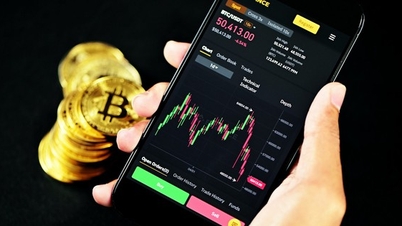In just one hour on October 10, more than $7.5 billion in leveraged positions suddenly “evaporated” in panic. The earthquake was not caused by a system error or a hack, but by a globally significant policy statement from US President Donald Trump.
"Black Swan" from social networks
In a post on the Truth Social platform, Donald Trump announced that the US would impose a 100% tariff on imports from China, starting November 1 or earlier. The move was made in response to Beijing's "aggressive stance" and export controls on rare earth minerals - a crucial component of the high-tech supply chain.
The tariff bomb immediately triggered a wave of violent sell-offs across risky asset markets, from stocks to oil to cryptocurrencies. Bitcoin, the world’s largest digital currency, which had just reached a historic peak of over $125,000 earlier this week, plummeted. At one point, the price of bitcoin plummeted below $113,000, even reaching $102,000, its lowest level since June.

Trump's decision to impose new tariffs on Chinese goods caused bitcoin to plummet 12% to below $113,000 (Photo: Invezz).
Bitcoin's sudden crash sent a domino effect through the entire market. According to data from Coinglass, a record $19 billion worth of positions were liquidated in 24 hours, wiping out more than 1.6 million traders. It was described as "the largest liquidation in crypto history."
Bitcoin wasn’t the only one caught in the firestorm. Ethereum (ETH), the second-largest cryptocurrency, lost more than 10% of its value, falling below $3,900. Other major altcoins like XRP and Solana (SOL) also saw declines ranging from 17% to 30%.
The total global cryptocurrency market capitalization has "evaporated" about 400 billion USD in just one day.
The shock of Mr Trump’s announcement was just a catalyst. The underlying cause of this catastrophic crash, according to experts, was excessive leverage in the market. David Jeong, CEO of algorithmic trading platform Tread.fi, described the event as a “black swan”. He said many institutions had not anticipated this level of volatility.
As the price of bitcoin began to fall, highly leveraged long positions were forced to close to cover losses. Stop-loss orders were triggered en masse, creating a sell-off spiral that pushed the price down further and faster, triggering a chain reaction of liquidations.
“This shows the increasingly close relationship between the crypto market and global macro factors,” said Vincent Liu, chief investment officer at Kronos Research, adding that the decline, although triggered by concerns about US tariffs, was amplified by “excessive institutional leverage.”
The event also raised concerns about contagion risks. "The focus now shifts to the level of risk among counterparties and whether this will lead to a contagion effect in the broader financial markets," warned Brian Strugats, head of trading at Multicoin Capital.
Where will the market go?
After the shock, the market is holding its breath watching key support levels. According to Caroline Mauron, co-founder of trading firm Orbit Markets, the next important psychological and technical level for bitcoin is $100,000. If this price is broken, she said, it "will mark the end of the three-year bull cycle."
The panic has sent the market's "fear and greed" index plunging to "extreme fear" levels, indicating widespread pessimism. However, historically, such strong cleanups have typically cleared out weak positions and created a stronger foundation for the next rally.
The recent flash crash is a valuable lesson in risk management and the impact of geopolitical events on a market that is considered to be decoupled. “Volatility will certainly persist, but look for signs of recovery once the market clears,” advises Vincent Liu.
The US-China trade war has once again proven that no "safe haven" is absolutely safe in a connected financial world.
Source: https://dantri.com.vn/kinh-doanh/thue-quan-moi-cua-my-khien-gia-bitcoin-boc-hoi-20-ty-usd-bi-xoa-so-20251011142112318.htm





![[Photo] Worshiping the Tuyet Son statue - a nearly 400-year-old treasure at Keo Pagoda](/_next/image?url=https%3A%2F%2Fvphoto.vietnam.vn%2Fthumb%2F1200x675%2Fvietnam%2Fresource%2FIMAGE%2F2025%2F12%2F02%2F1764679323086_ndo_br_tempimageomw0hi-4884-jpg.webp&w=3840&q=75)
![[Photo] Parade to celebrate the 50th anniversary of Laos' National Day](/_next/image?url=https%3A%2F%2Fvphoto.vietnam.vn%2Fthumb%2F1200x675%2Fvietnam%2Fresource%2FIMAGE%2F2025%2F12%2F02%2F1764691918289_ndo_br_0-jpg.webp&w=3840&q=75)








































































































Comment (0)